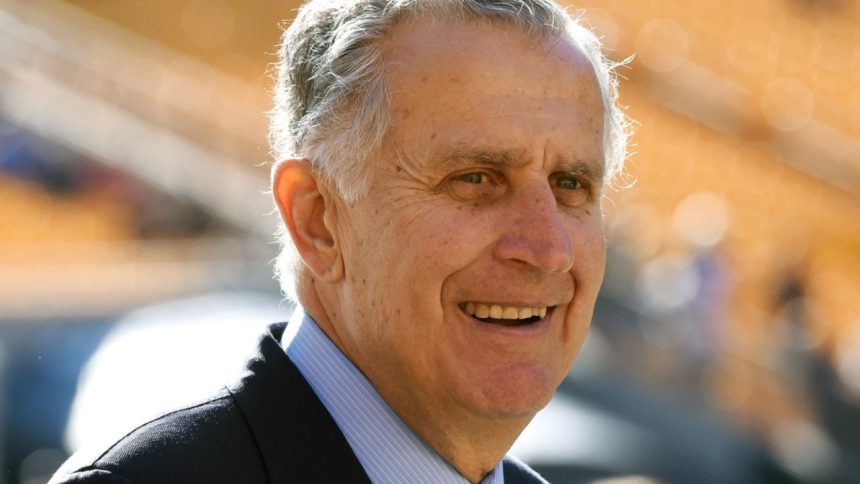Former NFL Commissioner Paul Tagliabue, a defining architect of modern professional football, passed away on November 9, 2025, at the age of 84. His family announced that he died at his home in Chevy Chase, Maryland, from heart failure complicated by Parkinson’s disease.
Tagliabue’s 17-year tenure as commissioner, from 1989 to 2006, was a period of unprecedented growth and stability for the league, transforming it into the financial and cultural powerhouse it is today. His leadership legacy is a complex fabric woven with extraordinary business achievements, profound social stances, and some significant controversies.
You Might Like: The Private World of Rosamund Pike
Net Worth and Financial Legacy
At the time of his death, Paul Tagliabue’s net worth was estimated to be $20 million. This substantial wealth was accumulated through his long and successful career steering the NFL. His compensation reflected the league’s rising fortunes; by 1998, his annual salary was about $5 million, which grew to roughly $8 million by 2004. In his final year as commissioner in 2006, he earned approximately $10 million. Even in retirement, Tagliabue continued to receive significant deferred compensation and benefits from the league, including an $8.58 million payout in the 2011 fiscal year.
While impressive, his earnings were notably more modest than those of his successor, Roger Goodell, highlighting the explosive financial growth the league experienced after Tagliabue had already laid the crucial groundwork. His financial legacy is inextricably linked to the value he created for the entire NFL. He was a master negotiator who oversaw television contracts that exploded from $473 million in 1989 to over $3.6 billion by 2006. Under his watch, the average value of NFL franchises grew by a staggering 212% over a seven-year period, enriching team owners and reshaping the sports landscape.
A Lasting Impact on the Game
Paul Tagliabue’s impact on the NFL extends far beyond financial metrics. He was a transformative leader who fundamentally shaped the league’s structure and values. He oversaw the expansion from 28 to 32 teams, welcoming the Carolina Panthers, Jacksonville Jaguars, a reconstituted Cleveland Browns franchise, and the Houston Texans. Perhaps his most crowning achievement was establishing labor peace after the strikes of the 1980s. By forging a strong, respectful relationship with NFL Players Association head Gene Upshaw, he ushered in 17 years without a work stoppage, introducing the free-agency and salary-cap system that defines the modern game.

His leadership was also defined by his response to national crises and social issues. In the wake of the 9/11 terrorist attacks, he made the decision to cancel all NFL games for the upcoming weekend, a move that was widely supported. He also took a bold stand for social justice, moving Super Bowl XXVII from Arizona after the state refused to establish a Martin Luther King Jr. holiday.
Furthermore, he was instrumental in ensuring the New Orleans Saints returned to their city after the devastation of Hurricane Katrina, convincing owner Tom Benson not to relocate the team. His creation of the “Rooney Rule” in 2003, which mandated the interview of minority candidates for head coaching vacancies, was a pioneering, if imperfect, step toward greater diversity in the league’s hiring practices.
Also See: The Two Brides of Frankenstein
Despite these achievements, his legacy includes a significant blemish: his early handling of the concussion crisis. He was publicly criticized for once dismissing concussions as a “pack-journalism issue” and contending the number was “relatively small.” He later apologized for these remarks in 2017, calling his language “intemperate” and acknowledging the need for better data and research. This complex mix of visionary growth and public missteps made him a consequential, if sometimes controversial, figure who was ultimately elected to the Pro Football Hall of Fame as part of its Centennial Class of 2020.
Paul Tagliabue’s story is one of a steady hand guiding the NFL through a period of massive change. He is survived by his wife of 60 years, Chandler, his son Drew, and his daughter Emily. The league he helped build into a global phenomenon now mourns the loss of one of its most important architects.



